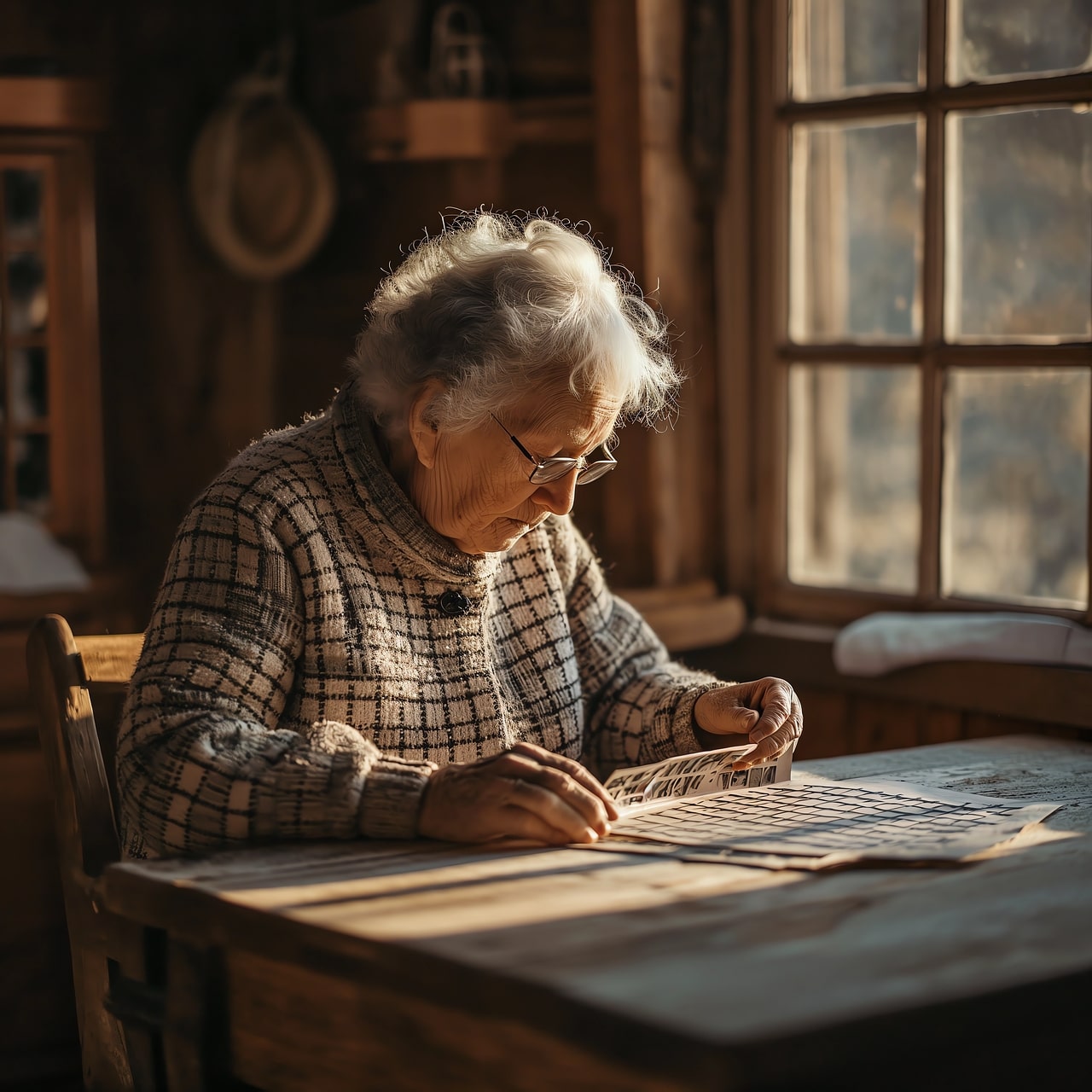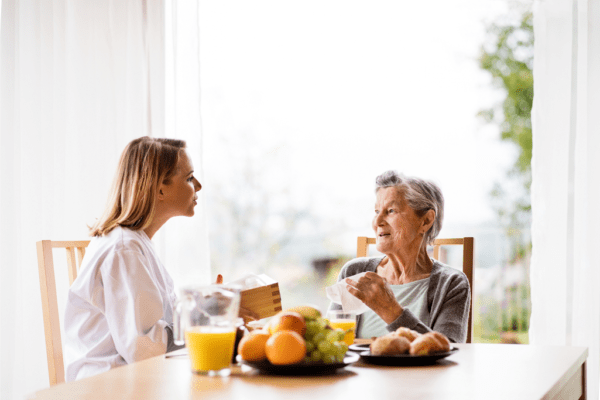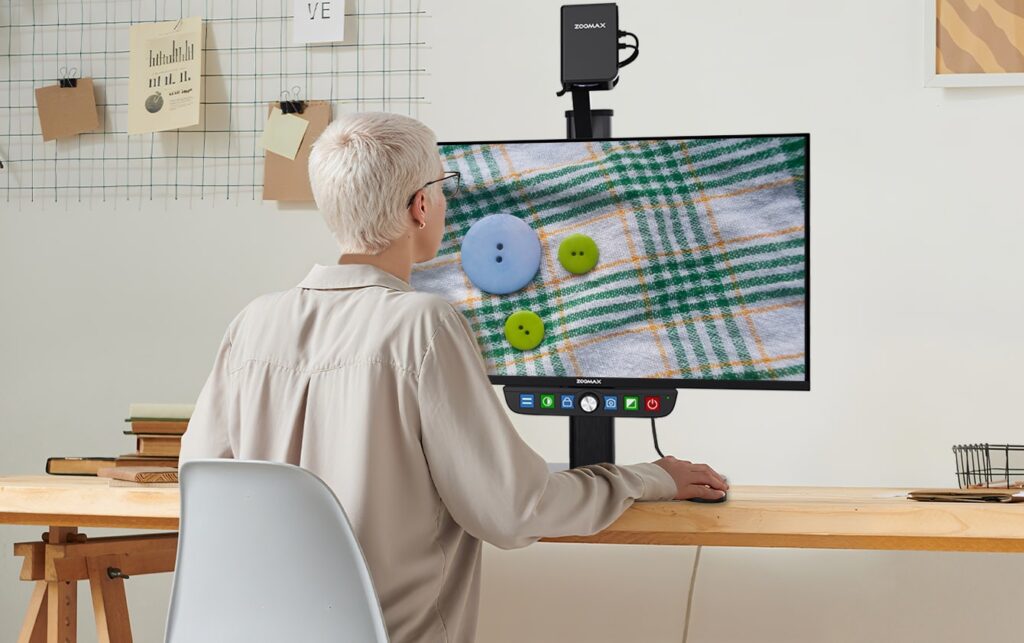Every year, Health Aging Month reminds us that aging is not a process to be passively accepted, but a journey where we can maintain the quality and dignity of later life through scientific care. Among the health issues of the elderly, vision decline is often regarded as an “inevitable part of getting old”. However, few people know that over 80% of age-related vision problems are preventable and manageable. The overlooked “low vision” is quietly depriving many elderly people of their ability to live independently.
What Are The Age-Related Vision Problems?

Deteriorating vision is one of the most intuitive signs of aging for the elderly. From unconsciously enlarging the font size when reading newspapers, hesitating to cross the road because they can’t see the traffic lights clearly, to mistaking “once a day” on the medicine box for “three times a day”, vision degradation brings not only inconvenience to life but also hidden safety hazards. According to statistics, falls caused by vision problems account for more than 35% of home accidents among the elderly.
What deserves more attention than ordinary vision decline is “low vision” – a condition where vision remains below 0.3 and cannot be corrected by surgery, medication, or regular glasses. Unlike complete blindness, it is enough to prevent the elderly from independently performing daily activities such as cooking, dressing, and shopping, gradually reducing them from “self-sufficient” to “dependent”.
Four Major Eye Diseases In Old Age
When facing vision loss, many elderly people fall into two misunderstandings: some think “it’s normal to see poorly when getting old” and endure it in silence; others blindly believe in “folk remedies” and miss the opportunity for intervention. In fact, behind age-related vision problems, there are often treatable causes. Cataracts, glaucoma, macular degeneration, and diabetic retinopathy are the four major “culprits” leading to low vision in the elderly.

Among them, cataracts can restore clear vision through surgery, and glaucoma can be controlled with treatment if detected early. The core of healthy aging has never been “fighting against aging”, but “responding to aging scientifically”: have regular fundus examinations (it is recommended that the elderly over 60 have one examination every year), monitor vision as closely as blood pressure and blood sugar; when experiencing distorted vision, dark shadows in front of the eyes, or sudden vision loss in one eye, seek medical attention immediately instead of waiting for “natural recovery”.
Home Modifications And Low-Vision Assistive Tools
For the elderly with low vision, the significance of “seeing” is more than just “seeing clearly” – it is about “maintaining independence”. In addition to medical intervention, simple home modifications and assistive tools can help them regain control of their lives: replace the warm light in the living room with 4000K neutral white light to avoid direct glare or dim lighting; attach high-contrast color labels to medicine boxes and remote controls, mark the “emergency button” in red, and circle the “commonly used keys” in yellow; choose e-readers with magnification functions, voice guide canes, and even the “screen-reading function” on mobile phones. These tools are not “compromises”, but “bridges” that help the elderly maintain their autonomy. Communities can also carry out low vision screening and assistive tool experience activities during Health Aging Month, letting the elderly and their families know that low vision does not mean “being useless”. With appropriate support, they can still buy groceries by themselves and tell stories to their grandchildren.

Digital Magnifier Can Help
Assistive Technology is helping lots of people with vision loss today. Visually impaired person may wonder if any product can help them see clearly and easily. Some people might take the very familiar optical magnifiers, while others would prefer the electronic magnifiers which also being called digital magnifiers. To compare the optical and digital magnifiers, please read: https://zoomaxusa.com/common-types-of-low-vision-aids/
Take the Luna 6 handheld digital magnifier an example. It is lightweight for pocket carrying. The big physical buttons with high contrast colors make it easy to operate for the seniors. With the basic features and superb clear image, Luna 6 is the love for many low-vision people when they go shopping or read something at home. If long-period reading is a need, Snow 12 or Luna Eye could be the perfect options. They provides excellent lighting and big screens which are designed for better reading experience. The latest new-tech visial aids called Snow Pad is also amazing! For those who have iPads. Snow Pad can be connected and they DIY a modern-looking portable desktop digital magnifier!
Guard The Vision, Guard The Love
Healthy aging has never been an abstract concept, but lies in every specific need – enabling the elderly to see the dosage on the medicine box clearly, giving them the courage to walk through familiar streets alone, and allowing them to still feel the details and warmth of life from the green trees outside the window and the words in the newspaper. This Health Aging Month, let’s start by caring about the “vision” of the elderly around us: accompany your parents for a fundus examination, help the elderly at home adjust the brightness of a lamp, and tell them: vision may grow old, but the love for life and the desire for independence are always worth guarding.


